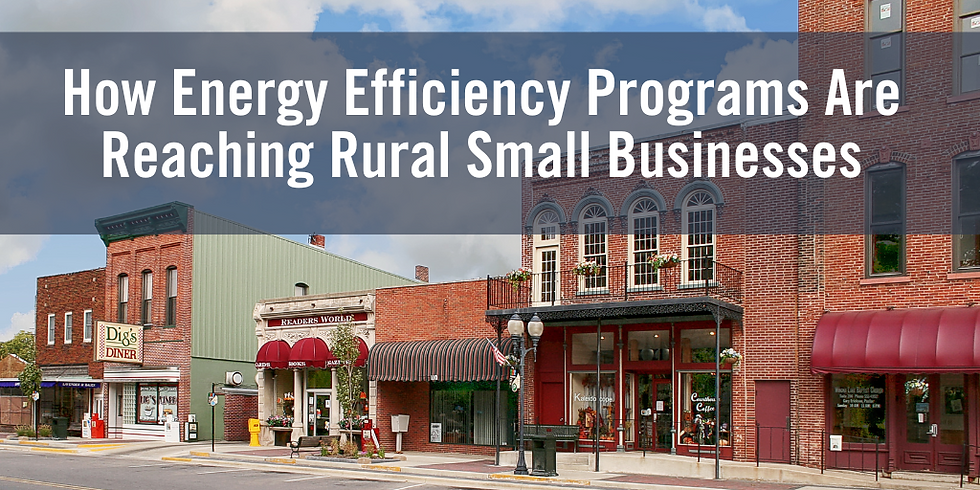From Light Bulbs to Smart Buildings: The Ongoing Evolution of Energy Efficiency
- kristinabenson7
- Feb 27
- 3 min read
Updated: Mar 27

Written By: Kristina Benson
In 1880, the city nights started to glitter with illumination and within two years the first purpose-built power station began to fuel our industrializing cities. The dawn of the electrical era had begun. As our cities grew, our need for power only increased. Demand surged with rising energy use, and rising to meet it was a globally interconnected energy economy.
The 1973 Oil Crisis exposed the risks of global energy dependence; sparking national efforts to reduce consumption, diversify energy sources, and improve efficiency. In response, President Nixon signed the 1975 Federal Energy Policy and Conservation Act (EPCA), creating policies that encouraged innovation and resource management. Over the following decades, regulations and incentives continued to drive advancements in energy efficiency making sustainable practices more economically viable.
Over time, a more resilient energy sector has emerged, where reducing waste and optimizing energy use are not just environmental choices but essential strategies for long-term cost savings and economic stability. Improving building energy performance is no longer an optional sustainability measure—it’s a fundamental business decision.
A brief historical perspective of energy evolution:
1882: First purpose-built power station
1893: Chicago named the City of Light at the World's Fair
1930s: Dust Bowl crisis highlights the need for sustainable resource management
1930: Establishment of the Federal Power Commission (FPC) introduces regulatory power over interstate and wholesale transactions and transmission of electric power
1962: Silent Spring by Rachel Carson raises awareness of environmental impacts
1970: Establishment of the Environmental Protection Agency (EPA)
1973: U.S. Oil Crisis accelerates interest in energy conservation
1975: Federal Energy Policy and Conservation Act (EPCA) passed
1992: EPA launches Energy Star
2000: First LEED Platinum building in the U.S. - Philip Merrill Environmental Center in Annapolis, Maryland
2019: U.S. and U.K. generate more energy from zero-carbon sources than fossil fuels for the first time
In recent decades, building systems strategies have evolved from isolated design considerations into a fully integrated component of building operations and urban planning. As energy costs fluctuate and regulatory pressures increase, commercial buildings are no longer viewed as static assets but as dynamic systems capable of responding to real-time energy demands.
The move toward holistic energy management, where efficiency measures are no longer just about reducing consumption but about actively optimizing how and when energy is used. The rise of grid-interactive buildings, which communicate with utility providers to adjust demand based on grid conditions, represents a new frontier in commercial real estate. These systems leverage battery storage, real-time energy pricing, and demand response programs to enhance both efficiency and resilience.
At the same time, electrification is accelerating in order to reduce carbon footprints. The transition away from fossil fuel-based heating systems toward electric heat pumps, induction systems, and district energy solutions is reshaping how buildings consume and distribute power. Combined with on-site renewable energy generation and improved energy storage solutions, commercial buildings are increasingly becoming energy producers as well as consumers—a fundamental shift in the traditional energy model.
For property owners and real estate professionals, staying competitive requires a proactive approach to energy management. Beyond cost savings, well-executed energy strategies enhance tenant satisfaction, improve building performance, and future-proof assets against changing regulations and market expectations. Implementing smarter, high-impact solutions today can drive long-term value and position properties as leaders in an increasingly sustainability-driven market.
Implementation Strategies for Property Owners
Strategic Retrofits: Upgrade building envelopes, install high-performance HVAC systems, and use LED lighting to reduce energy waste and improve indoor comfort.
On-Site Renewable Energy: Incorporate solar panels, battery storage, and/or community solar programs to reduce dependence on traditional power grids.
Smart Building Management: Implement occupancy-based HVAC scheduling, smart sensors, real time data analytics, and integrated management systems to optimize energy use.
Performance Benchmarking: Track and analyze energy consumption to identify cost-saving opportunities.
Green Certifications: Pursue LEED, WELL, Energy Star or other green building certifications to enhance marketability and attract environmentally-conscious tenants.
As energy costs and environmental considerations continue to shape the market, efficiency has become an increasingly valuable strategy for long-term resilience. From growing global energy demand to the need for a more sustainably built environment, policy and innovation have continuously shaped the industry. Investing in smarter, more efficient buildings strengthens resilience against market volatility, reduces long-term operating expenses, and positions properties for success in an era of climate consciousness and evolving tenant expectations.
Reach out to our team today at info@waypoint-energy.com to learn how you can enhance your building’s performance and long-term value





Comments